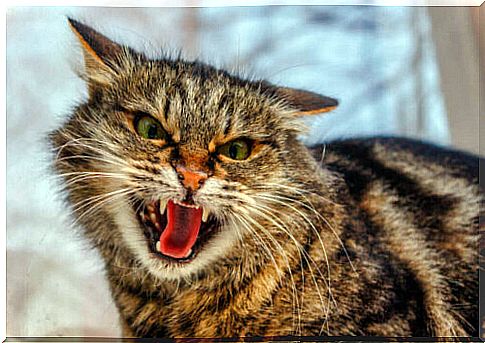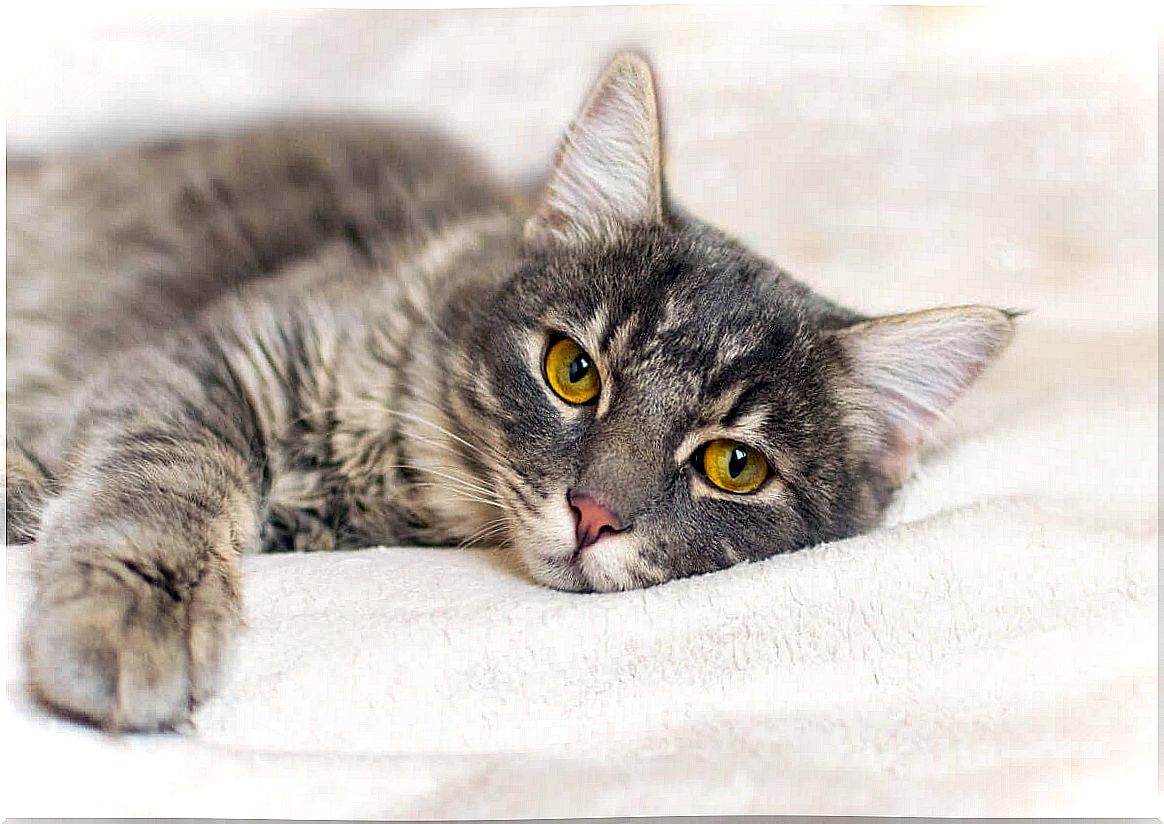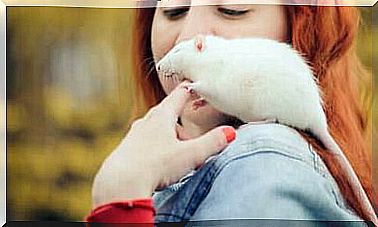The 4 Most Common Behavioral Disorders In Cats

Sharing space and routine with an animal is a profound and enormously enriching experience for humans. However, for a good coexistence it is crucial to prevent possible behavioral disorders in cats.
Would you like to learn more about the nature of cats and what behavioral disorders can develop in cats from their characteristics? Below we are going to give you some useful information on this topic.
That’s what cats are like …
Ignore the title of this section. Cats, like all species, have their own individual and unique nature. Although some species share certain tendencies, it is important to have a thorough understanding of cats in order to properly assess when your cat may have a behavioral disorder.

Despite their individual character, there are a number of general ideas about domestic cat behavior that you can consider. The following traits are common in cats:
- They are solitary animals: they tend to forage and move around on their own. In addition, cats mark and fight for their territory. In the wild, they usually only find each other to mate.
- They are independent: people often think of them as cold and distant animals, but nothing could be further from the truth. There are simply moments when cats are not interested in interacting with their owner. At the same time, they don’t need too much attention when it comes to meeting their needs.
- Cats are very curious: in general, every new object arouses the interest of cats and they always look for new horizons when their world becomes too small. As you will read later, this is something to consider in order to avoid stress and certain accidents.
- They have been with us for many years: dealing with cats has been a part of human life for a very long time. Hence, both types have a certain instinctive basis for understanding each other. So pay attention to what you see.
Cats and stress
The coexistence of a cat with a human in an environment prepared for the latter can lead to stress in the cat to a certain extent . In this respect, it is important to find out which of these stimuli may be stressing the cat, as cats are generally prone to stress when a component in their environment changes.
Some behavioral disorders in cats
Below, we take a closer look at some of the most common behavioral disorders in cats. There are many more, but the following are usually the ones that lead to a visit to the veterinarian.
1. Atypical bowel movements
Cat owners often complain when cats defecate or urinate outside of their litter box. Every cat owner will have already experienced such an “accident”. However, if you analyze this behavior carefully, you will always find a reason for it.
If you see behaviors in cats, such as defecating or urinating outside the litter box or in certain places, several factors may be the cause:
- An element in their environment is causing them stress. Maybe they don’t like the litter in the litter box, or the litter box is in a place that scares them. Cats can experience stress from sources of noise, strong smells, or some other element that you may not recognize as a problem.
- Territoriality. Uncastrated males are more likely to urinate outside their box than neutered males or cats to mark their territory. This usually happens when the cat feels that its area has been invaded. This can be done either by a human or by a new animal in the household. But certain smells can also impair this instinct.
- Health problems. Cats may experience this behavior because of a health problem – such as pain or kidney problems. The amount of urine, its color, or the shape and / or consistency of the feces are signs to look out for when considering an organic disorder.
2. Aggression
Aggression or agonistic behavior in domestic cats can have many causes. As a cat owner, you should be prepared for this behavior, as it usually manifests itself in aggressive behavior such as scratching or hissing.
However, isolated aggressive behavior should not be confused with behavioral disorders in cats. Like any other animal, cats react negatively to agonistic stimuli, such as intruding into their territory or personal space. To avoid this, it is best to get to know the animal so that its needs can be respected.
3. Atypical food intake
Excessive, rapid, or even refusal to eat can also be a sign of behavioral disorder in cats. It is important to consider the environmental conditions in which the cat is eating, such as the temperature or the presence of other animals.
But the amount of feed at the time of feeding can also be important. For example, if the cat has been hungry at some point in its life, it may have caused it to become anxious about food. In addition, external factors or illness can also cause stress in the animal, which can also cause the animal to stop eating.
4. Behavioral disorders in cats: scratching behavior
A distinction must be made here between typical scratching behavior and scratch marking. The latter is carried out as an informative rather than an aggressive method of indicating presence in one’s territory.
However, if the scratch marking is done compulsively, it may indicate behavioral disorders in cats. You can assume that your cat may feel the need to tag the objects that it considers its own – and that it does not want others to touch – because it is stressed about its personal space.

Behavioral Disorders In Cats: When Should You See A Vet?
It is important to get to know the cat in your home to understand what is normal and what could indicate the presence of behavioral disorders. However, if attempts to correct these behaviors are unsuccessful, it is time to see a veterinarian.









